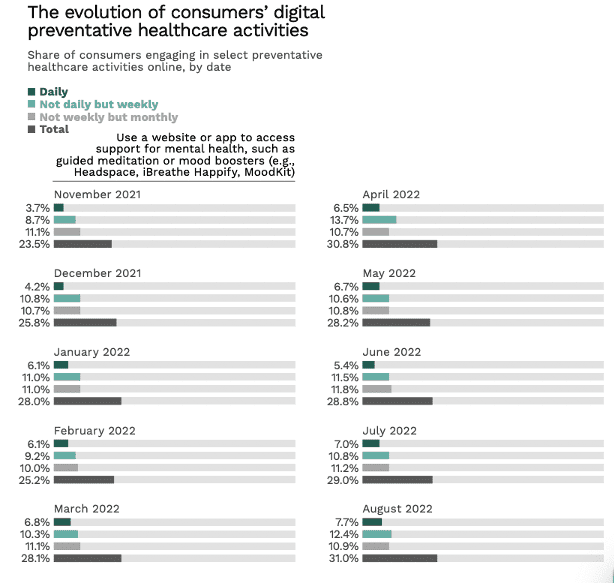Price-Pummeled Consumers Find Solace in HealthTech

If you’re feeling a bit more stressed out about making ends meet nowadays, there’s good reason.
Perusing the headlines on PYMNTS this week doesn’t exactly inspire confidence. Inflation is at a 40-year high. Close to two-thirds of us are living paycheck to paycheck and struggling to pay the bills. And those of us who aren’t just getting by are rapidly becoming inured to the sticker shock that happens whenever we take a glance at our grocery receipts and discover that the cost of a dozen eggs seems to be hovering somewhere between absurd and stratospheric.

“PYMNTS’ research finds that 92% of consumers have noticed higher product prices, while 74% saw increases in their monthly bills,” PYMNTS found in “New Reality Check: The Paycheck-to-Paycheck Report,” a collaboration with LendingClub. “Consumers across all income levels cited increases in products or bills at similar rates, but financially struggling consumers were more likely to consider such increases to be widespread and distressing.”
Read more: 60% of US Consumers Have Cut Spending Due to Inflation
In response, 55% of consumers surveyed have limited spending capacity, 49% have shifted their shopping preferences, and 66% of them living paycheck to paycheck have cut spending. And while it’s true that we’ve gotten a bit of a reprieve on gas prices lately, all that widespread distress is still, well, widespread and distressing.
And to top it all off, the holidays are fast approaching.
We need a break. Stat.
Time to rest and recharge and maybe just catch up on “House of the Dragon” if we can ever find the remote. Amazon feels our pain, apparently. And although they’d rather we watch “Lord of the Rings: The Rings of Power,” they’re introducing an “Alexa, find my remote” feature. At last.
We aren’t the only ones, it seems. Another PYMNTS study — noting that a full 148 million U.S. consumers used some sort of preventative healthcare technology in August alone — found that mental health apps were far and away the biggest growth area in a booming segment.

“Connected Wellness: What’s Next in the Connected Economy,” a PYMNTS and CareCredit collaboration, found that 31% of consumers surveyed used mental health apps.
“The share of consumers using mental health tools like meditation apps and mood boosters is up 32% from November 2021, while their use of wearables like Fitbit and Apple Watch to track vitals increased just 17% in that time,” the study stated.
We’ll be the first to admit that a guided meditation on Headspace doesn’t have the same restorative appeal as, say, sipping a Negroni on the Amalfi Coast. But at a time when the price of everything from ordering a pizza via an aggregator to flying to Naples on Aer Lingus (and $3.50 for a dozen eggs!?!) has us regretting our life choices, we’ll take whatever relief we can get.
